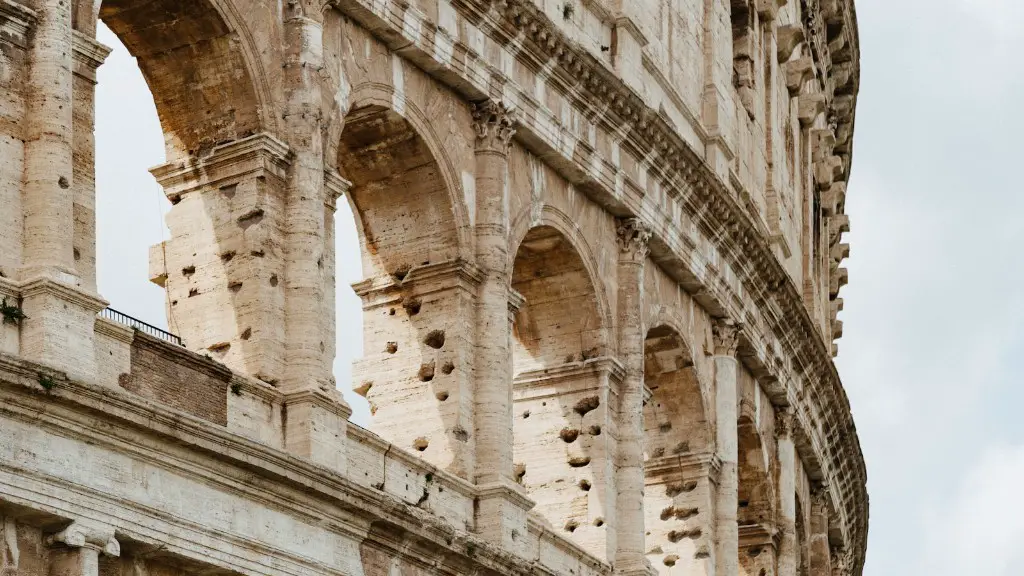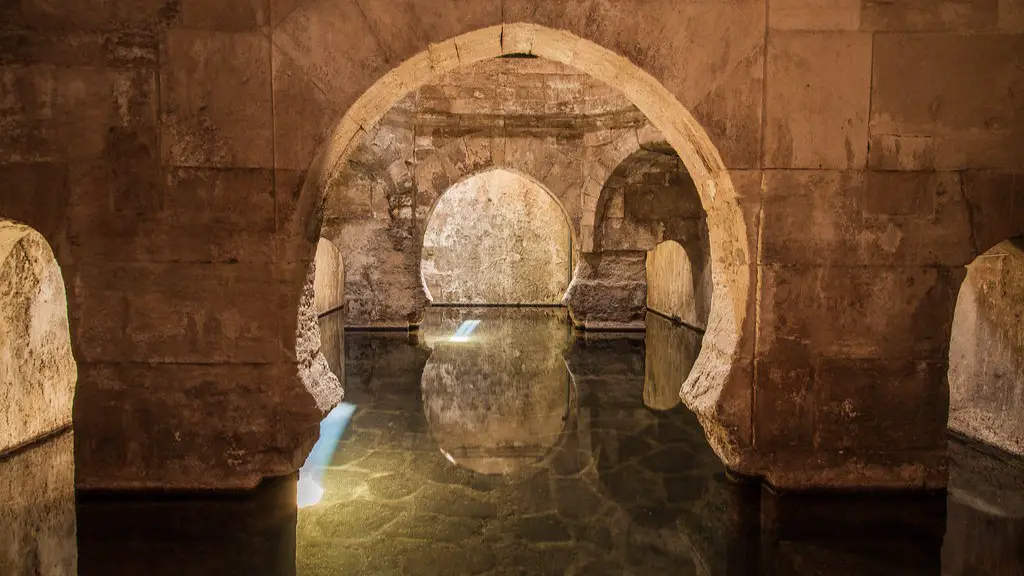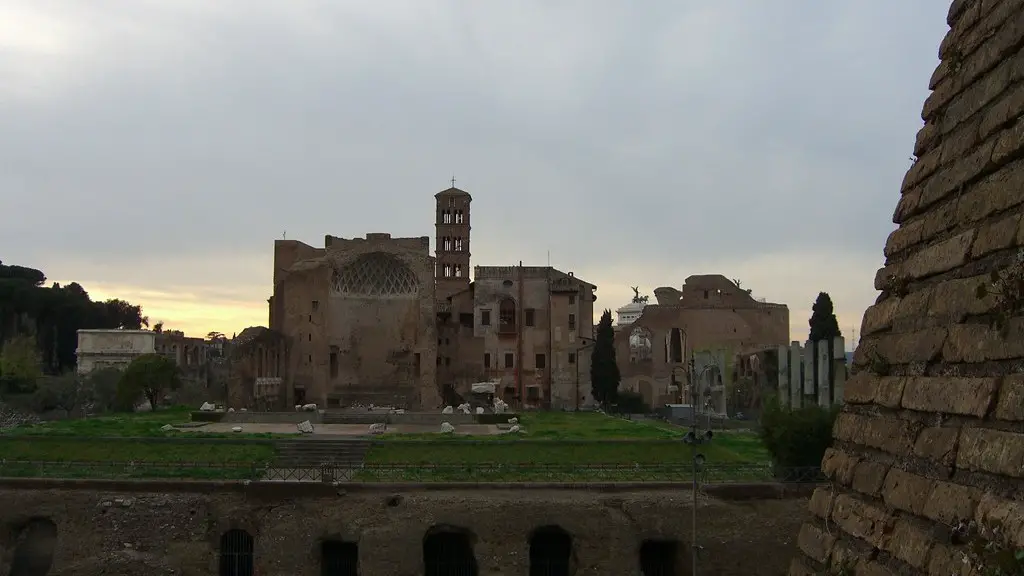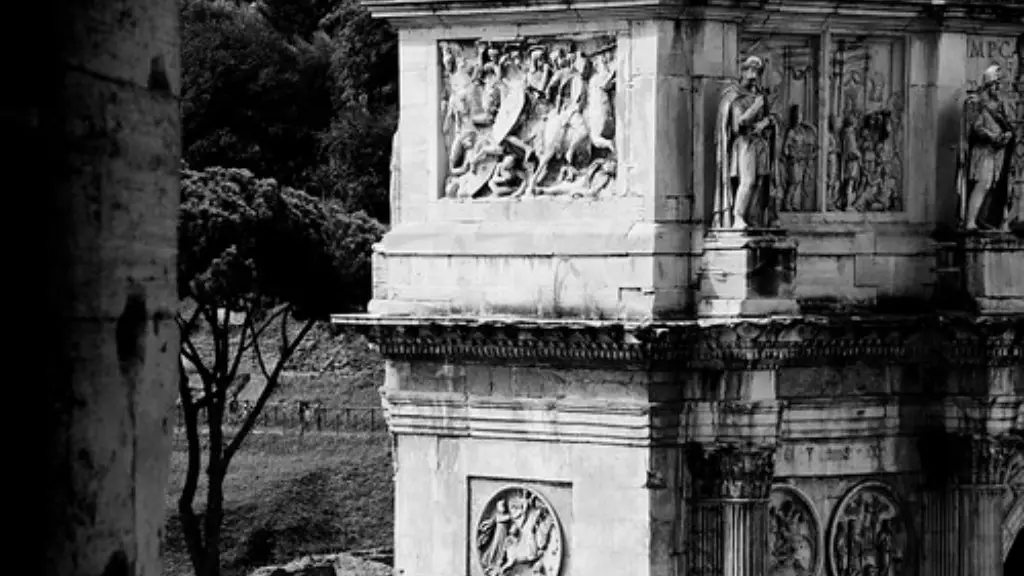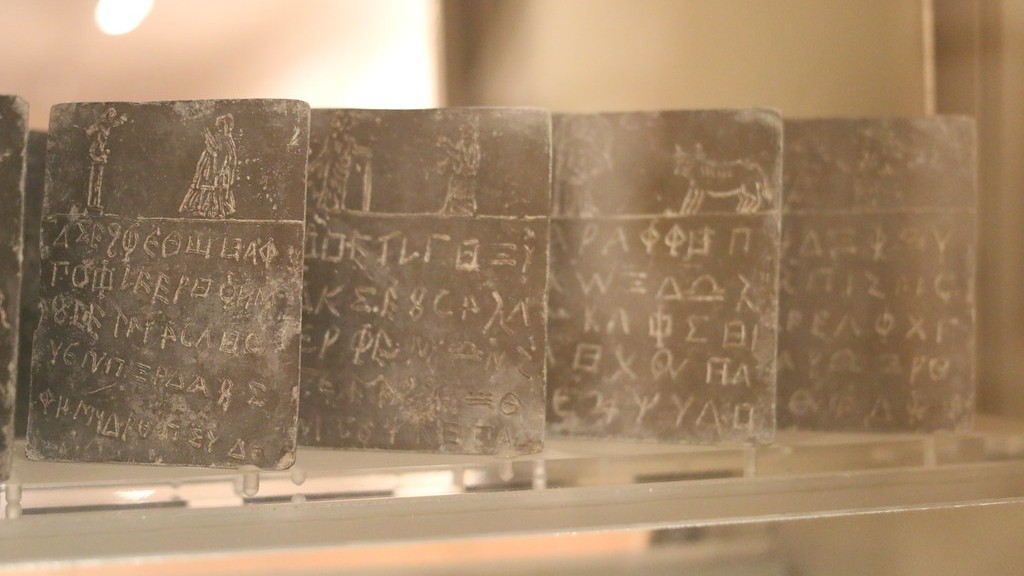In ancient Rome, the kitchen was referred to as the culina. This term was derived from the Latin word for ‘cooking pot’. The culina was located either near the main entrance of a home, or near the triclinium, where meals were served. It was typically equipped with an oven, a hearth and other cooking devices.
The culina was viewed as an important part of the home, and reflected the social status of its inhabitants. Wealthy Romans often built separate kitchens with lavish amenities and elaborate decorations. On the other hand, the kitchens of the less wealthy were typically more humble and meagerly furnished.
The role of the chefs in the culina was highly esteemed. Roman cooks were known to possess considerable skill in their craft, and had a mastery of many culinary techniques. They were also expected to remain up-to-date with the latest food trends.
In the culina, the chefs made use of a range of ingredients, such as grains, legumes, vegetables, fruits, olive oil and fish. Meat was also an important part of Roman cuisine, but it was eaten sparingly due to its high cost.
Herbs and spices were widely used in Roman cooking. Popular spices included coriander, mustard, turmeric, saffron, cumin and pepper. Herbs such as oregano, basil, thyme, sage and mint were used to enhance the flavor of dishes.
The Mediterranean diet was what most Romans ate. This diet was based on moderately chopped vegetables, fruit in season, grains, legumes and fish, as well as some meat and dairy. This diet was believed to be the healthiest, and was widely prescribed by physicians.
Roman cuisine was heavily influenced by the food cultures of other cultures, such as those of Greece and Egypt. This can be seen in the use of unfamiliar ingredients such as garum, a fish sauce that was popular in the Roman Empire.
The ancient Romans also enjoyed many delicacies, such as sweet pastries, ice cream and honeyed fruits. These treats were often reserved for special occasions, such as banquets or dinner parties. Honey was sometimes used as a sweetener, while nuts and dried fruits were also popular ingredients.
Cuisine of Ancient Rome
One of the defining features of Roman cuisine was its immense diversity. This can be seen in the wide range of dishes that were enjoyed in ancient Rome. Roman chefs made use of a number of cooking techniques, such as baking, roasting, boiling and frying.
Artichokes, mushrooms, and asparagus were common Roman vegetables. Meats such as pork, chicken, goat, rabbit and game were often used in dishes, as well as offal and ‘exotic’ meats such as boar, hare and ostrich. Seafood was a popular ingredient, with fish being especially common.
Roman cooks also had access to a variety of herbs, spices and flavorings. They used these to give dishes extra flavor, as well as to mask the off-flavors of some ingredients. Wine and vinegar were used for their sour flavor, and to give dishes extra depth.
An example of a popular Roman dish is ‘isicia omentata’, which consisted of minced pork and beef, eggs, spices, and herbs, with a layer of chicken liver on top. The dish was served with a fried egg and olive oil.
Sauces, such as garum and liquamen, were also popular in Roman cuisine, as were dishes featuring lentils, such as ‘lenticula’. These dishes were typically served with a selection of vegetables, fish, and various other accompaniments.
Banquets and Feasts
Roman banquets and feasts were extravagant affairs, typically accompanied by music, plays, pantomime and poetry recitals. The food served at these occasions was varied and lavish, with a number of dishes prepared by the slave chefs in the culina.
At a Roman banquet, food was served in courses, each with its own pair of delicacies. Entrees were usually preceded by a course of starters, such as olives, cheese, eggs and small dishes. This was followed by dishes of meat, fish and vegetables, as well as other side dishes. Desserts varied depending on the occasion, but cakes, fruit and honeyed sweets were all enjoyed.
Wine was also a fixture of the dining experience, and was often served with each course. Roman wines had a relatively sweet taste and were typically made from grapes harvested from vineyards near Rome.
Towards the end of the meal, the host might offer some delicacies such as figs, almonds, or a honey cake. Alternatively, the host might offer a platter of fruit or a selection of exotic delicacies.
In sum, the Roman kitchen was a place of great importance and sophistication. Meals were practical, yet lavish and varied. It was in the culina that some of the classic dishes of Roman cuisine were crafted.
Influence on Modern Cuisine
The cuisine of ancient Rome has had a lasting impact on modern cuisine, with many of its dishes and ingredients still used today. Roman culinary techniques, such as roasting, continue to be employed in kitchens across the world.
Some of the dishes enjoyed by Romans continue to be popular today. Examples of these dishes include ‘risotto alla milanese’, which is a traditional Italian dish of rice cooked with saffron, ‘pizza’, which derives from the Latin word for ‘pie’ and ‘Fettuccine Alfredo’, which is a cheese and butter sauce served with wide noodles.
In addition, the Romans’ preference for the Mediterranean diet has been embraced by many across the world. This diet is rich in fresh fruits and vegetables, whole grains and healthy fats, and can reduce the risk of heart disease and other serious conditions.
Finally, modern chefs still use Roman spices and herbs, such as sage, oregano, mustard, pepper and cumin. These spices are often used to give dishes a unique taste and complexity.
Conclusion
The ancient Romans had an incredible grasp on the art of cooking, which has continued to influence and shape modern cuisine. From the ingredients used, to the kitchen itself, it is clear that the Romans had a dedication to creating delicious dishes. The influence of Roman cooking—and the culina—will forever be etched into the annals of culinary history.
